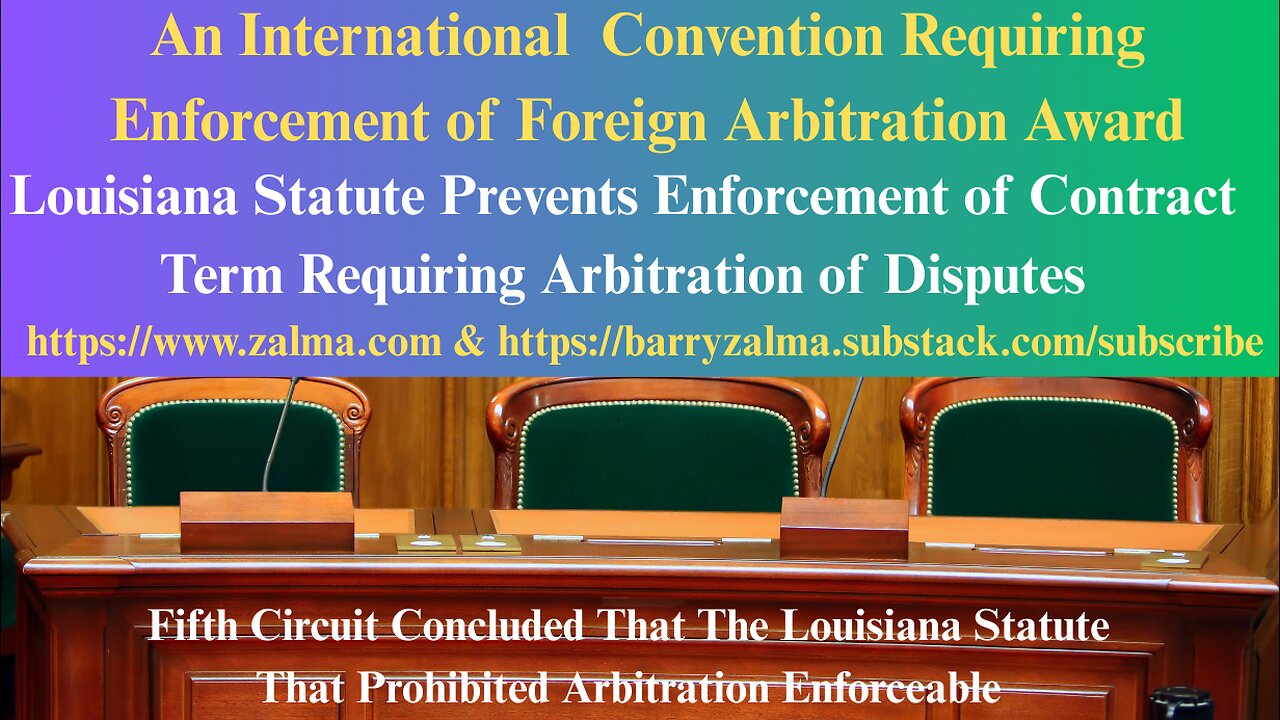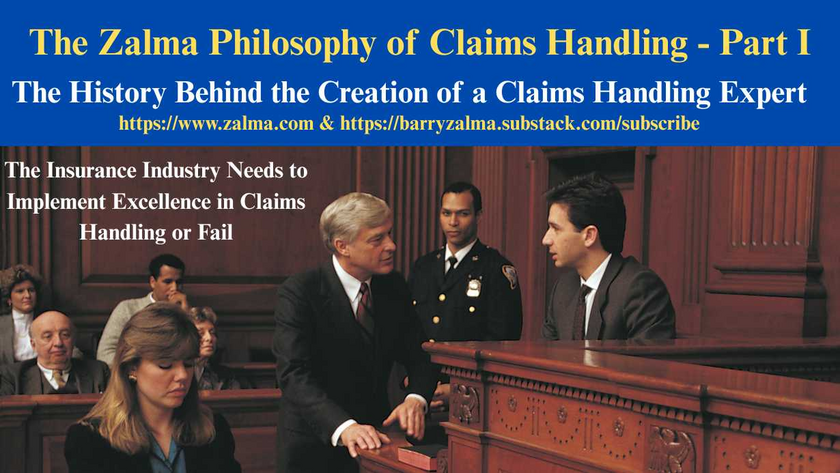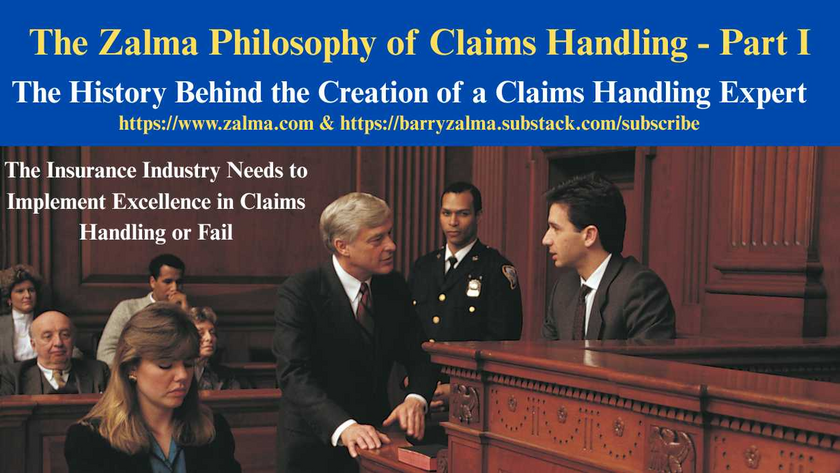
Private Limitation of Action Provision Defeats Suit Against Insurer
Post 5049
See the full video at https://lnkd.in/gUFvU7-h and at https://lnkd.in/gH4KgkRd and at https://zalma.com/blog plus more than 5000 posts.
This case involves a contractual statute of limitations in an insurance policy. Sidney and Shatika Davis (together, “Davis”) argue the trial court erroneously granted summary judgment in favor of Homeowners of America Insurance Company (“HAIC”).
In Sidney Davis And Shatika Davis v. Homeowners Of America Insurance Company, No. 05-24-00035-CV, Court of Appeals of Texas, Fifth District, Dallas (April 7, 2025) because: (i) the contractual limitations period was valid (ii) the limitations was not tolled, (iii) HAIC did not breach the contract by failing to pay the amounts claimed, and (iv) HAIC addressed the fraud claim in its summary judgment motion.
BACKGROUND
HAIC issued an insurance policy for the Davis property (the “Property”). The Policy includes a contractual limitations period that requires suit to be filed by the earlier of two years and one day from the date the claim is accepted or rejected by HAIC or three years and one day from the date of the loss.
HAIC’s independent adjuster (the “IA”) met with the Davis contractor to inspect the Property. The inspection revealed hail damage to the roof, gutters/downspouts, and a storage shed. No interior damage was claimed or found. Additionally, inspection of the attic revealed foam insulation in the attic on the underside of the roof decking and framing. The foam insulation was intact, fully adhered, and undamaged and Davis did not claim that the foam insulation was damaged by the storm.
HAIC accepted the Claim on November 20, 2017 based on the IA’s findings which estimated $19,662.75 for storm damage repairs to the roof, gutters/downspouts, and shed. HAIC issued payment on the Claim in the amount of $6,612.75.
On March 1, 2018, HAIC issued a supplemental payment of $11,591.53 on the Claim. In issuing the supplemental payment, HAIC made clear that the payment was based on the contractor’s higher estimate and its position on coverage for foam insulation remained unchanged.
Davis attempted to invoke appraisal sometime between March 14, 2018, and April 27, 2018. There is no evidence that either party followed through or attempted to timely pursue, engage in, or complete the appraisal process in 2018 or 2019.
In an August 5, 2020 e-mail to Davis’s counsel, HAIC declined to reopen the Claim for further action because the appraisal request was made outside the two-years-and-one-day period required by the Policy for filing suit.
Davis sued HAIC on August 5, 2020, asserting claims for breach of contract, anticipatory breach, violations of the Insurance Code and Deceptive Trade Practices Act (“DTPA”), breach of the duty of good faith and fair dealing, fraud, and conspiracy. The court entered an order granting HAIC’s summary judgment motion on limitations in its entirety and dismissing the case with prejudice.
ANALYSIS
The Contractual Limitations Period
Davis argued the contractual limitations period is invalid because it has the effect of imposing a limitations period of less than two years as proscribed by the Texas code.
Generally, the limitations period for a breach of contract cause of action is four years after the day the cause of action accrues. In the context of insurance policies, insurance provisions that limit the time within which to file a suit to two years and a day are valid and binding.
The two-year period expired before the three-year period, and therefore, the two years and a day provision applied. Moreover, even if the three-year period applied, Davis’s August 5, 2020 suit was not timely filed.
Did the Supplemental Payment or the Appraisal Process Toll Limitations?
Appraisal under an insurance policy involves a contractual process by which the insurer and the insured select third parties to determine the amount of a claimed loss when the insurer and the insured cannot agree what the amount of loss.
In the present case, the November 20, 2017 letter was an unambiguous denial of coverage for foam insulation.
An insurer’s consideration of additional information from the insured after denying coverage does not alter the finality of an otherwise unambiguous decision to deny coverage.
Although Davis adduced no evidence to controvert HAIC’s denial of his claim for foam insulation on November 20, 2017, he suggests that limitations began to run when HAIC made the supplemental payment on March 1, 2018. The supplemental payment, however, did not include payment for the foam insulation and HAIC made clear that its position on that aspect of the Claim remained unchanged. The supplemental payment did not restart the limitations period and even if the limitations period began to run on March 1, 2018, Davis would have been required to file suit by March 2, 2020, and his August 5, 2020 petition is still untimely.
The nature of the appraisal process is such that it would typically not come into play until a claim is denied. With the claim denied there would be no disputed amount to appraise.
CONDITION PRECEDENT
A condition precedent in a contract is an event which must occur or an act that must be performed before a right can accrue to enforce an obligation. A cause of action for breach of contract does not accrue until all conditions precedent to the parties’ right to file suit have been satisfied. Therefore, the insurer’s interpretation of the Policy to require performance of the condition precedent before a cause of action accrues is not unreasonable.
The evidence shows that the Policy condition requiring demand for appraisal was met. The undisputed evidence established that, at best, the appraisal process was demanded but never commenced.
THE FRAUD CLAIM.
HAIC specifically identified fraud as one of Davis’s claims, and throughout the motion argued that the Policy’s limitations period applied to all of Davis’s claims. Since the breach of contract claim was time barred by the Policy’s two years and a day limitations period the extra-contractual claims were also time barred.
The judgment of the trial court was AFFIRMED.
ZALMA OPINION
As the court clearly stated an insurance policy is a contract. Failure to comply with a policy condition – file suit within two years and one day – is clear, unambiguous and enforceable. HAIC established that the suit was filed more than two years and one day after the claim was unambiguously denied for amounts greater than that already paid. Every policyholder and policy holder lawyer that wishes to sue an insurer must read and understand the policy and when it has a private limitation of action provision must file suit before the limitation provision expires.
(c) 2025 Barry Zalma & ClaimSchool, Inc.
Please tell your friends and colleagues about this blog and the videos and let them subscribe to the blog and the videos.
Subscribe to my substack at https://barryzalma.substack.com/subscribe
Go to X @bzalma; Go to Newsbreak.com https://www.newsbreak.com/@c/1653419?s=01; Go to Barry Zalma videos at Rumble.com at https://rumble.com/account/content?type=all; Go to Barry Zalma on YouTube- https://www.youtube.com/channel/UCysiZklEtxZsSF9DfC0Expg
Go to the Insurance Claims Library – https://lnkd.in/gwEYk
Detail Charging Defendant for Fraud is Sufficient
Post 5242
Read the full article at https://lnkd.in/g_HVw36q, see the video at https://lnkd.in/gpBd-XTg and at https://lnkd.in/gzCnBjgQ and at https://zalma.com/blog plus more than 5200 posts.
Charges that Advises the Defendant of the Crime Cannot be Set Aside
In United States Of America v. Lourdes Navarro, AKA Lulu, No. 25-661, United States Court of Appeals, Ninth Circuit (December 4, 2025) Lourdes Navarro appealed the district court’s denial of her motion to dismiss the indictment and enter final judgment was in error.
FACTUAL BACKGROUND
The indictment alleged that insurers reimburse only for medically necessary services. Navarro performed unnecessary respiratory pathogen panel (RPP) tests on nasal swabs collected from asymptomatic individuals for COVID-19 screening.
Navarro billed over $455 million to insurers for those additional RPP tests that she knew to be medically unnecessary. These allegations constituted a plain, concise, and definite written ...
Louisiana Statute Prevents Enforcement of Contract Term Requiring Arbitration of Disputes
Post 5241
Read the full article at https://www.linkedin.com/pulse/international-convention-requiring-enforcement-award-barry-sttdc, see the video at and at and at https://zalma.com/blog plus more than 5200 posts.
In Town of Vinton v. Indian Harbor Insurance Company, Nos. 24-30035, 24-30748, 24-30749, 24-30750, 24-30751, 24-30756, 24-30757, United States Court of Appeals, Fifth Circuit (December 8, 2025) municipal entities including the Town of Vinton, et al sued domestic insurers after dismissing foreign insurers with prejudice. The insurers sought arbitration under the Convention on the Recognition and Enforcement of Foreign Arbitral Awards (the “Convention”) but the court held Louisiana law — prohibiting arbitration clauses in such policies—controls, as the Convention does not apply absent foreign parties who ...

Refusal to Provide Workers’ Compensation is Expensive
Post 5240
Read the full article at https://lnkd.in/guC9dnqA, see the video at https://lnkd.in/gVxz-qmk and at https://lnkd.in/gUTAnCZw, and at https://zalma.com/blog plus more than 5200 posts.
In Illinois Department of Insurance, Insurance Compliance Department v.USA Water And Fire Restoration, Inc., And Nicholas Pacella, Individually And As Officer, Nos. 23WC021808, 18INC00228, No. 25IWCC0467, the Illinois Department of Insurance (Petitioner) initiated an investigation after the Injured Workers’ Benefit Fund (IWBF) was added to a pending workers’ compensation claim. The claim alleged a work-related injury during employment with the Respondents who failed to maintain workers’ compensation Insurance.
Company Overview:
USA Water & Fire Restoration, Inc. was incorporated on January 17, 2014, and dissolved on June 14, 2019, for failure to file annual reports and pay franchise taxes. It then operated under assumed names including USA Board Up & Glass Co. and USA Plumbing and Sewer. The business ...
The Professional Claims Handler
Post 5219
Posted on October 31, 2025 by Barry Zalma
An Insurance claims professionals should be a person who:
Can read and understand the insurance policies issued by the insurer.
Understands the promises made by the policy.
Understand their obligation, as an insurer’s claims staff, to fulfill the promises made.
Are competent investigators.
Have empathy and recognize the difference between empathy and sympathy.
Understand medicine relating to traumatic injuries and are sufficiently versed in tort law to deal with lawyers as equals.
Understand how to repair damage to real and personal property and the value of the repairs or the property.
Understand how to negotiate a fair and reasonable settlement with the insured that is fair and reasonable to both the insured and the insurer.
How to Create Claims Professionals
To avoid fraudulent claims, claims of breach of contract, bad faith, punitive damages, unresolved losses, and to make a profit, insurers ...

The History Behind the Creation of a Claims Handling Expert
The Insurance Industry Needs to Implement Excellence in Claims Handling or Fail
Post 5210
This is a change from my normal blog postings. It is my attempt. in more than one post, to explain the need for professional claims representatives who comply with the basic custom and practice of the insurance industry. This statement of my philosophy on claims handling starts with my history as a claims adjuster, insurance defense and coverage lawyer and insurance claims handling expert.
My Training to be an Insurance Claims Adjuster
When I was discharged from the US Army in 1967 I was hired as an insurance adjuster trainee by a professional and well respected insurance company. The insurer took a chance on me because I had been an Army Intelligence Investigator for my three years in the military and could use that training and experience to be a basis to become a professional insurance adjuster.
I was initially sat at a desk reading a text-book on insurance ...

The History Behind the Creation of a Claims Handling Expert
The Insurance Industry Needs to Implement Excellence in Claims Handling or Fail
Post 5210
This is a change from my normal blog postings. It is my attempt. in more than one post, to explain the need for professional claims representatives who comply with the basic custom and practice of the insurance industry. This statement of my philosophy on claims handling starts with my history as a claims adjuster, insurance defense and coverage lawyer and insurance claims handling expert.
My Training to be an Insurance Claims Adjuster
When I was discharged from the US Army in 1967 I was hired as an insurance adjuster trainee by a professional and well respected insurance company. The insurer took a chance on me because I had been an Army Intelligence Investigator for my three years in the military and could use that training and experience to be a basis to become a professional insurance adjuster.
I was initially sat at a desk reading a text-book on insurance ...













